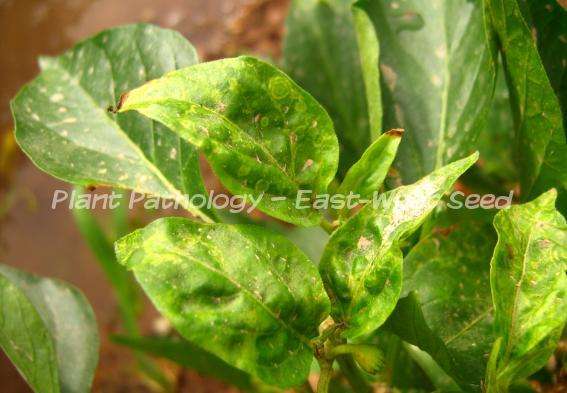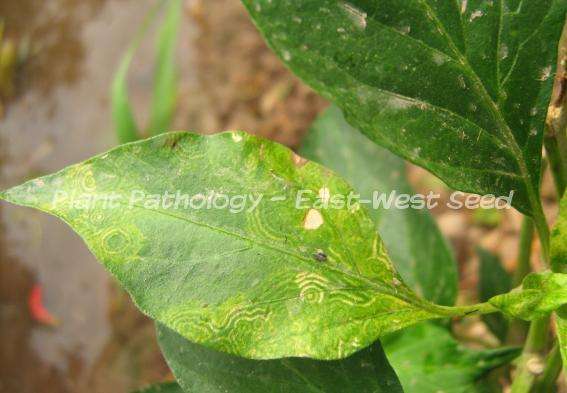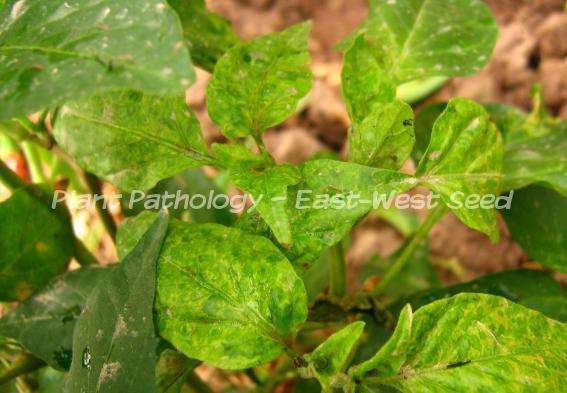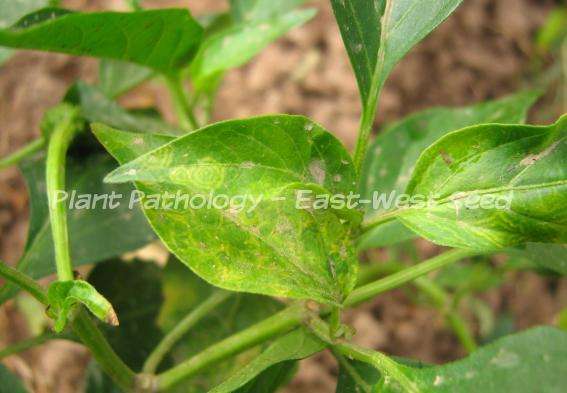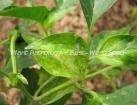Causal Agent:
Tospovirus (Watermelon silver mottle virus or WSMoV; Tomato spotted wilt virus or TSWV)
| Characteristic Symptoms: | |
 |
Symptoms may vary depending on the virus strain, variety and plant age at infection. |
 |
Leaves of WSMoV infected pepper plants have chlorotic flecks or ring-like pattern |
 |
TSWV infected pepper plants show necrotic ring spots on leaves and stem and leaf distortion. |
 |
Plants infected at very young age are usually stunted and unproductive. |
| Transmission and Spread: | |
 |
The virus is transmitted in nature by thrips in a persistent (propagative) manner (vector can acquire and transmit the virus after feeding for several minutes to hours; virus replicates inside the vector). |
 |
Young thrips (larval stage) acquire the virus and adult thrips spread the virus from plant to plant during feeding. |
 |
The virus is not seed-transmitted. |
| Management and Control: | |
 |
Use resistant varieties, if available.
|
 |
Use virus-free seedlings.
|
 |
Remove infected plants as early as virus symptoms are observed to prevent/minimize spread of the virus by thrips. |
 |
Remove crop debris, weeds and other sources of thrips after the cropping season.
|
 |
Plowing and harrowing may help reduce vector population in the soil.
|
 |
Control/minimize thrips population by using plastic mulch, blue sticky traps and/or use of insecticides such as spinosad (e.g. SuccessⓇ, EntrustⓇ), deltamethrin (e.g. Decis®, DecideⓇ, ScoutⓇ, Agro DeltametrinⓇ), acephate (e.g. Acetam®, BlackhawkⓇ) or dimethoate (e.g. Perfecthion®), fenitrothion (e.g. Sumithion 50Ⓡ)., profenofos (e.g. Selecron) and acephate (e.g. Acetam, Compete).
|
To view other diseases, click here.
Need more help? Ask the Doctor.



